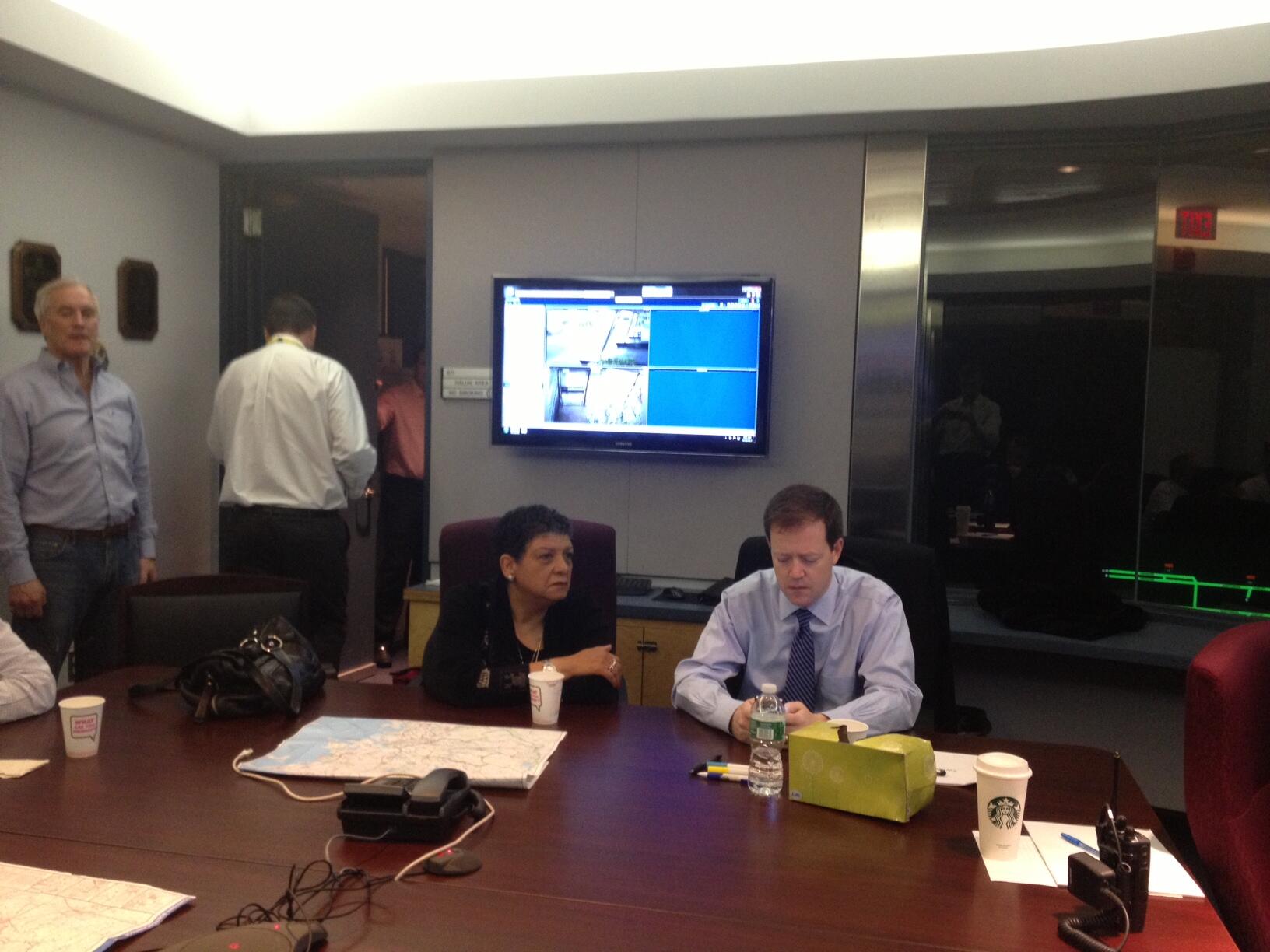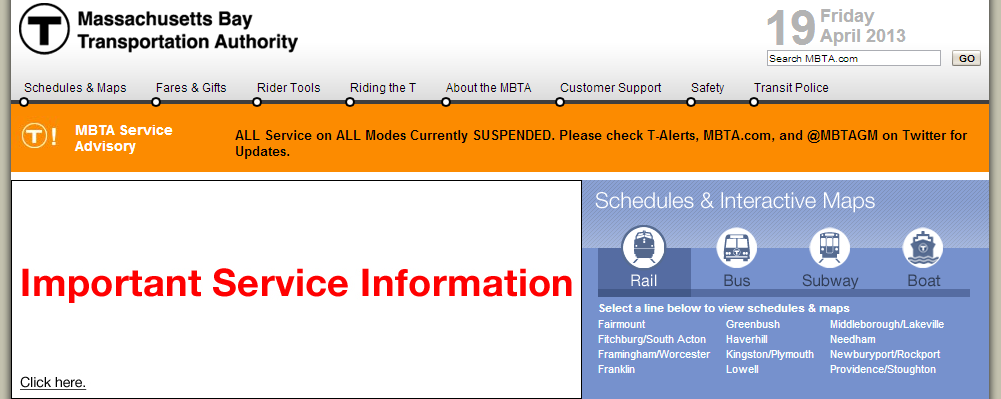Boston's Transit Network Shuts Down in Regional Manhunt - Confusion, Frustration Ensues
 In coordination with local and state officials, all MBTA services were shut down early morning two Fridays ago, to facilitate efforts in the manhunt for the remaining suspect responsible for Monday's Boston Marathon bombings.
In coordination with local and state officials, all MBTA services were shut down early morning two Fridays ago, to facilitate efforts in the manhunt for the remaining suspect responsible for Monday's Boston Marathon bombings.
The ease of digital broadcasts helped the MBTA communicate the shutdown to its customers, but left those without a persistent digital connection in the dark. That morning, the Globe found riders were still confused and frustrated by the closure and lack of visible notice at stations:
Jonathan Cruz of Dorchester was on his way to his apprenticeship at Youth Build Boston, a program that teaches young people construction skills. An acquaintance stopped him on his way to the JFK/UMass Red Line station, warning him service was cancelled, but Cruz kept going, hoping to get more information at the station.
He arrived at the station at about 6:30 a.m. and found no signs about service [cancellation] and no employees, he said. His program has a very low tolerance for tardiness, and he was supposed to be in Roxbury by 7 a.m.
“I think they should have put signs up but the problem is, we have the Internet and we watch TV all the time, so they thought we would know,” he said.
This further highlights the need for non-digital information dissemination, accommodating those on the other side of the digital divide. Service notices need not be vinyl wall wraps that are planned weeks in advance, but the advancing deployment of advertising displays from Titan can certainly be instrumental in making it easier to inform those who otherwise arrive at stations:
Xheni Kurdari walked up the stairs at the JFK/UMass station and tried to open the station’s doors. No luck. She could not make the short commute to her job at State Street Bank and Trust Company in Quincy.
Kurdari said she went to bed early the previous night and did not hear the news of the police chase and shoot-out with the bombing suspects. She heard some sirens in the morning, but did not think much of them.
“I was wondering why there were no people around,” she said. “I’m gonna call my husband, I’m gonna wake him up, probably, and I’m gonna have him drive to work.”
Digital notifications are still one of the least effectively advertised customer information features in stations that can prove useful outside of it. I'm still surprised daily the number of passengers I encounter who don't realise that they can sign up for text-based 'T-Alerts' to their phones via SMS that don't require a smartphone. Even fewer people realise they can go to sites like NextBus.com for realtime bus arrival times and HowsTheT.com for realtime train arrival times from their PCs before they ever leave from home or work.
Of course, the MBTA website continues to be an indispensable resource, granted you can and know how to get there. Reaching out through the press in papers, television, and radio, can help circumvent the digital divide that still very much exists, even in Boston.
Signage in and around stations remains the most effective means of communicating with the public - that's why advertisers will pay to put signs in our stations...

